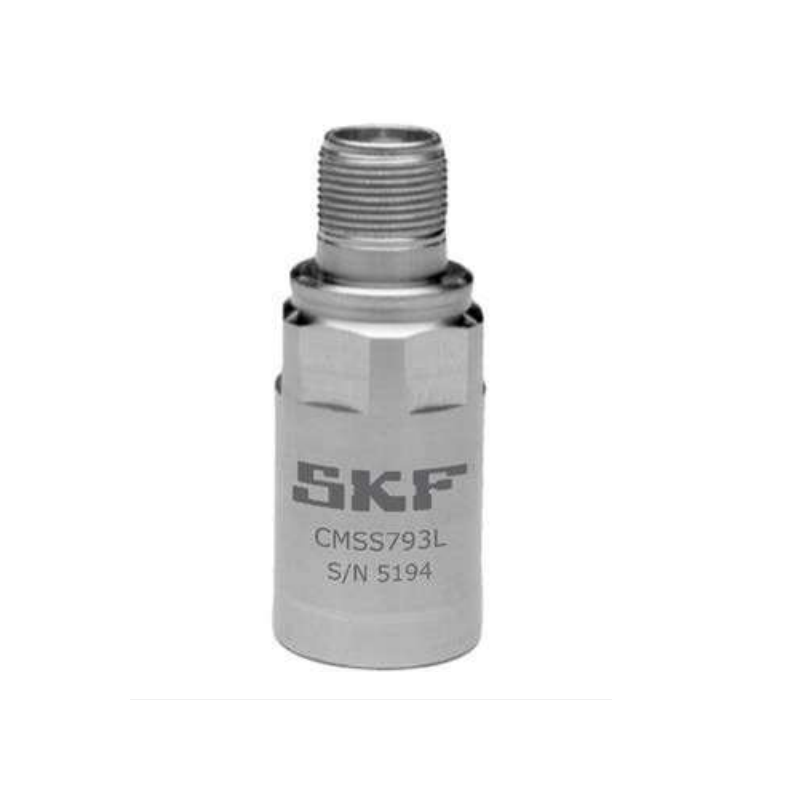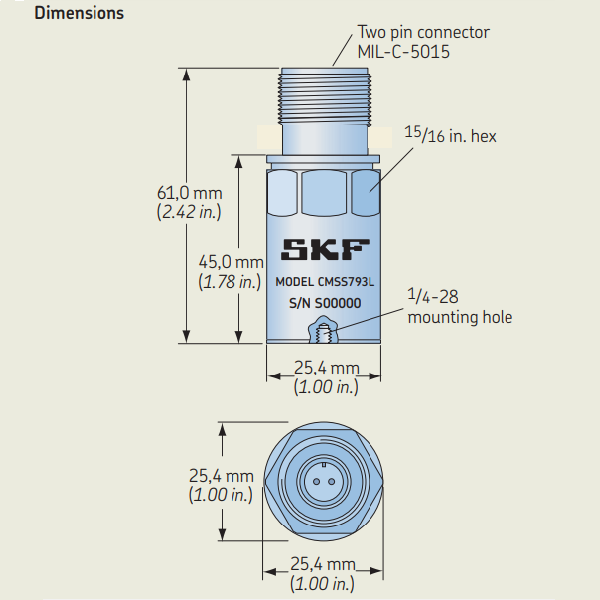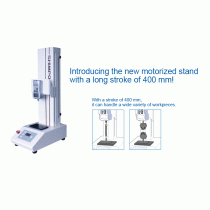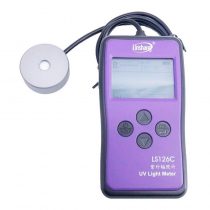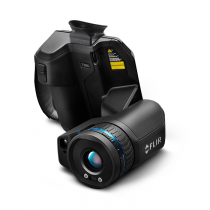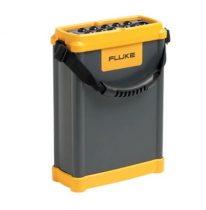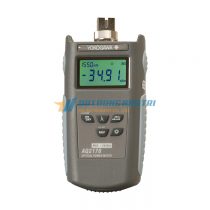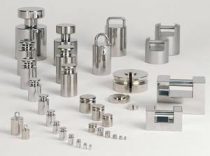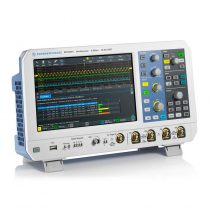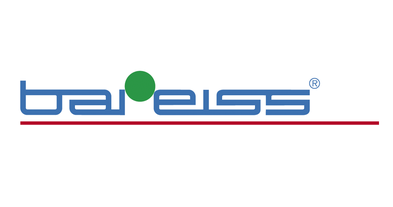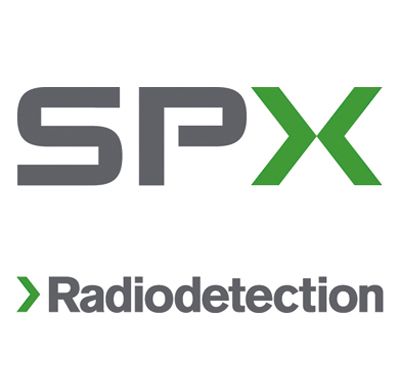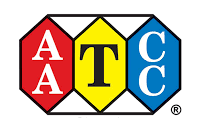Cảm biến đo độ rung tần số thấp SKF CMSS 793L
Hãng sản xuất: SKF,
Tình trạng: Còn hàng
Bảo hành: 12 tháng
- Cảm biến đo độ rung SKF
- Bộ đo và giám sát rung
- Cảm biến đo rung động SKF
- Cảm biến đo độ rung phòng nổ
- Cảm biến đo độ rung kết hợp đo nhiệt độ bề mặt
- Cảm biến đo độ rung động cơ
- Cảm biến đo độ rung hộp số
- Cảm biến giám sát rung động SKF
- Cảm biến đo độ rung môi trường công nghiệp nặng
- Đầu đo độ rung
- Đầu cảm biến đo độ rung
Low-frequency accelerometer, straight exit
The CMSS 793L is an industrial accelerometer for higher precision measurements at rotational frequencies as low as 12 r/min These speeds are most commonly found in the following industries:
• Power Generation (Wind Turbines)
• Pulp and Paper
• Petrochemicals
Applications include rotors, rolls and extruders The CMSS 793L combines high sensitivity (to reveal low amplitude signals) with a narrow band of frequency response The value of the high-pass iltering within the sensor makes it ideal for use in specialized, low speed analysis tasks using portable instruments or at speciic measurement points on on-line systems However, the low-pass iltering makes the CMSS 793L unsuitable as a general purpose accelerometer for rolling element bearing defect detection at more normal rotational speeds
Features
• Optimal for use with SKF on-line surveillance and protection systems and all portable data collection instruments
• 500 mV/g high sensitivity
• Ultra low-noise electronics for clear signals at very low vibration levels
• Low-pass iltered to attenuate high frequencies
• Hermetically sealed
• ESD protection
• Reverse wiring protection
Speciications
Dynamic
• Sensitivity: 500 mV/g
• Sensitivity precision: ±5% at 24 °C (75 °F)
• Acceleration range: 10 g peak
• Amplitude non-linearity: 1%
• Frequency range:
– ±5%: 0,6 to 700 Hz
– ±10%: 0,4 to 1 000 Hz
– ±3 dB: 0,2 to 2 300 Hz
• Resonance frequency, mounted, nominal: 15 kHz
• Transverse sensitivity: ≤ 5% of axial
• Temperature response: See graph





